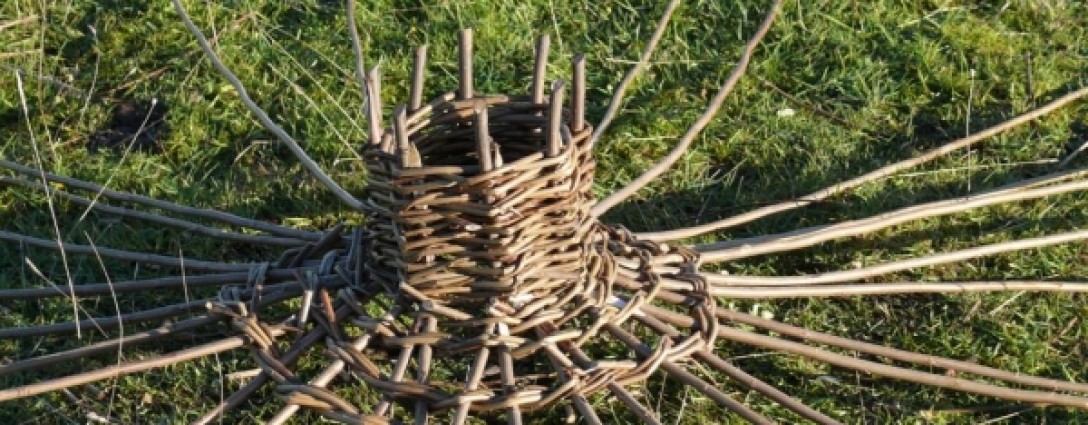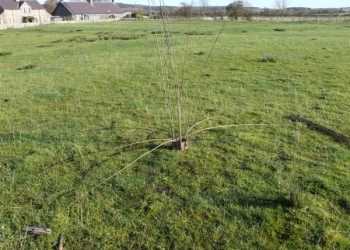Galleries
- Basketmakers' Association 50th Anniversary - Big Weave Basket number 44
- Basketmakers' Association 50th Anniversary - Plant Twisters 22/23
- Basketmakers' Association 50th Anniversary - Frame 3
- Basketmakers' Association 50th Anniversary - Frame 35
- Northumbrian Fishwife's Creel Workshop - November 2022
- Zarzo Baskets with Clare Revera - 16th/17th July 2022
- Chairman's Report Northumbria Basketry Group 10th Anniversary Celebration Exhibitions
- Anniversary Celebrations
- The Whittondean Willow Plot Story
- Weaving Our History
- Making a Willow Sphere - March 2015
- Harbottle Show
- Emily Davison Sculpture
- Joe Hogan Workshop
- Willow Play Den Images
- Giant Bee Skeps
- Caroline and Helene's Visit
- Willow Coal Miner Sculpture
- Birch Craft Weekend
- Making Rush Baskets
- Visit to Sweden September 2011
- Supporting Washington Wetlands Centre - Press Release
- Willow Nativity, St Cuthberts, Bedlington - Christmas 2010
- Somerset Visit, November 2010
- Supporting the RNLI 26th October 2010
- Visit to Sweden September 2010
- Weekend Basket Course 25/26 September 2010
- Celtic Knot Baskets - Hepple Self Help Group
- BA Summer Meeting Rothbury
- Introduction to Round Baskets - Etal
- Supporting the RNLI
- The Whitton Willow Plot Story
- Workshops - 2010
- Learning Revolution
Join our Mailing List
Receive the latest news direct to your inbox by signing up below :
Making a Willow Lobster Pot, November 2010
With Pascal Carr at the Fenton Centre, Wooler, 13th November 2010A bright sunny but cold day! The water table in the field was just below the surface.
16 stakes 7 foot, three quarters of an inch in diameter Black Maul semi green.
Take 8 number 7 foot Black Maul rods and slype on the belly at the butt end. Push these 3 inches into the ground around a 5 inch diameter ring with the slype facing out. (Orientation N, S, E, W, NE, SE, SW, & NW) Remove ring.
Using 5 foot weavers, place two butt ends in two gaps with ends sticking outside of circle, weave with a twisted pairing weave around the stakes. Do one circuit plus a stake going under the first butts which are sticking out (to hold in place) and then add two more weavers. All joins are butt first and the ends must be outside of the funnel so as not to obstruct the lobsters entrance. Continue to add weavers, taking care always to join in in a different place. New weavers are added when the first one is roughly half used which means that 2 or sometimes 3 are being twisted around the stakes (a bit like plant pyramids) When the weaving is 4 to 5 inches high rap down and finish off by kinking the ends and pushing down beside the stakes.
Then add 8 more 7 foot stakes beside existing ones. (To left of originals & push 3 inches into ground) Trim tips of the stakes and then gently pull two stakes out on either side of the body. (Encourage the stakes to bend with your foot) Keep the rod angle low along the ground and push the tips into the earth. Do one pair and then the opposite pair. Follow on with the rest of the stakes until all of the tips are inserted into the earth.
Weave with two rods once round as close as possible to the other weaving. The next round to be a thumbs width (circa 1 inch) from the first round so spiralling round, continue 3 times round keeping shape as flat as possible and stakes evenly spaced. Weaving should be now no more than 10 inches in diameter. The gaps must not be too wide or the lobsters will steal the bait.
Take 12 more stakes, slype on belly and insert on right hand side of 2 stakes right through the 3 rows of weaving, slype to be facing downwards (into pot) Now do 2 diagonally opposite ending up with N, NE, E, SE etc plus 4 where there are gaps. Do one more round, the top should be no more that 14 to 15 inches diameter.
Stop and pull out the unit from the ground and turn over trim off tips and butts.
Now place a heavy stone on the protruding neck rods and then bend each rod with thumbs to pre-form the curve of the pot taking care not to kink the rods. Bend all of the rods up to form an onion shape and tie with two pieces of heavy duty electric cable approximately 14 to 15 inches apart. (leave a long end and go round 4 times and twist the two ends) Pull in rods until the shape is 21 to 22 inches in diameter. Check that you have an even shape. Remove the stone and now you can sit down. Place the pot on its side and start a spiral weave with approximately 2 inches between the spirals to a height of approximately 16 inches, taking care to keep the round shape and ensuring that the top of the pot is drawn in somewhat. The pot is finished with two strong rows of weaving arranged close together to give a suitable space for the base rods to be pulled through.
Tidy up the ends of the weavers, Do not cut too short or movement of the sea might move the rods out of place.
Select 6 of the rods and tie up with cable, tie up 6 on the opposite side, so leaving 8 untied in between each side.
Take the first stake on the left, prick it at the base with the point of a knife, twist knife and at the same time bend the stake over to the far side of the stake opposite, push end between last two rows of weaving.
Take the first stake on the right, prick and bend crossing over the left hand bent stake, push end between weaving. Take second right hand stake, prick and bend over, push end through weaving. Take second stake on the left, prick down continue until all 16 stakes are down, make as flat as possible, try not to crack stakes when bending.
Untie the two lots of 6 stakes and prick down, weave over 2 lots of 4 under 2 lots of 4 and thread under edge of weaving continue.
Cut off ends leaving circa one and a half inch.
Pack randing, in the D shaped areas of base, insert a weaver beside each stake and weave a figure of 8 round bundles of 4. Only use the thick bit of the weaver as the base of the pot has to take the wear and tear on the sea bed. Poke end out through edge of weaving. Continue adding weavers until D shaped areas filled in.
Next, start packing between the last 12 stakes, using short off-cuts wider than the pot but not too thin. Starting at the tip thread under 4, over 4, under 4, over 4, sometimes it is difficult to pull through in one go so try in 2 stages leaving butt end sticking out and the tip threaded through top knot. Repeat starting from the opposite side so that tips and butts alternate.
When fully packed do a final trim of the ends, not too close or they may come undone and not too long so that sea weed gets caught on the pot.
SETTING THE POT
Thread a rope through about 4 or 5 stakes and tie, a float is tied to the other end.
Fresh fish bait for crabs, old salt mackerel for lobsters, although this varies from one location to another. Tie the bait next to the neck in the top of the pot using a rope or wire. Place some rocks in the base as weights.
The pot will keep best under salt water, salt helps to protect it. Wetting and drying hastens decay.
Alan Winlow & Gill Philipson



































